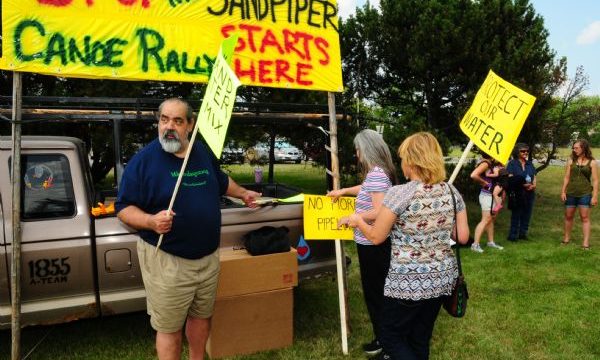Hey Kevin Cramer, The Lights Are Already Going Out In Minnesota

North Dakota Congressman Kevin Cramer has an op/ed in the Wall Street Journal today headlined, “Where Will You Be When the Lights Go Out?”
“The North American Electric Reliability Corp. (NERC), a regulatory authority that monitors the U.S. and Canadian power systems, released a study on Nov. 12 concluding that the long-term reliability of the U.S. grid in some areas is already at risk,” Cramer writes. “Because of rapid shifts to renewable and natural-gas generation, combined with closures of coal-fueled power plants due to existing Environmental Protection Agency regulations, “reserve margins” in the Midwest, New York and Texas have reached dangerously low levels—meaning an increased likelihood of brownouts and blackouts in the coldest weeks of winter and the hottest days of summer.”
What’s causing this? The federal government’s push for “green” energy which is moving America away from cheap, reliable energy sources and toward more expensive, less reliable options.
Cramer’s point is well-made, but I’d point out that the shortages he warns of may already be here. Minnesota leaders are facing the possibility of energy shortages if the state sees another bitterly cold winter (and here’s a spoiler: winters in the upper midwest are almost always bitterly cold).
“Minnesota is one polar vortex away from energy crisis,” reads the headline in the Grand Forks Herald. What’s causing this problem? Again, federal obstructionism to the build out of fossil fuel resources. Specifically, the infrastructure to serve that development:
“We are at the whim of mother nature at this point,” Dave Christianson of the Minnesota Department of Transportationtold the Minnesota Legislative Energy Commission Wednesday.
Christianson said that power plants’ coal supplies dipped to 10 percent of capacity earlier in the year, a situation blamed on crowded rail lines. Now, he said, coal stores average 30 percent to 40 percent of capacity and rail congestion has eased. If the weather cooperates, the stockpiles may build to more normal levels.
However, he and representatives of the wood and propane industries warned legislators that a repeat of last winter’s polar vortex deep freeze could lead to problems. …
BNSF reported that it is working with customers to make sure they have sufficient coal, and have plans to expand capacity to improve coal delivery.
“They were faced with a traffic load they couldn’t handle,” Christianson said.
Some coal plant operators are preparing for potential brownouts or blackouts, Christianson said, in case a polar vortex visits the area.
The incoming chairman of a state House energy committee blamed part of the rail problem on North Dakota crude oil for taking up much of Minnesota’s railroad capacity.
Rep. Pat Garofalo, R-Farmington, said in an interview that ever-increasing numbers of trains loaded with oil from western North Dakota’s Bakken oilfield are crowding out coal, farm commodities and other goods.
It should be a mark of national shame that in a time of plentiful energy resources – we have generations worth of coal, oil, and natural gas under our lands – some citizens are facing dire energy shortages because of misguided climate activism.
Yes, a spike in oil shipments has created a bottleneck in rail transport. That bottleneck has dominoed into other problems like coal shipment shortages. Propane shortages. Not to mention serious delays for agriculture producers. In short, this is hurting Americans.
President Obama has made international headlines by road blocking the Keystone XL pipeline for years. By doing so, he’s set an example for environmental activists around the nation who are fighting to block other projects like the Sandpiper line from Tioga, North Dakota, to Superior, Wisconsin.
This problem has been on-going for years. “Energy companies behind the oil boom sweeping the Northern Plains increasingly are turning to trains to move their crude across the U.S.,” reported the Associated Press in 2012. “The move comes as pipeline plans stall and existing pipelines can’t keep up with demand.”
The environmentalists think that if they hamstring fossil fuel energy development, if they raise the regulatory bar high enough and block infrastructure like pipelines long enough, that they’ll force a sea change away from oil and coal to wind power and solar power.
This is a pipe dream. It’s misguided. Those sources aren’t ready to supply America’s baseline demand for energy, and they may not ever be. But that’s not stopping the zealots from trying, no matter who is left wounded in the process.




